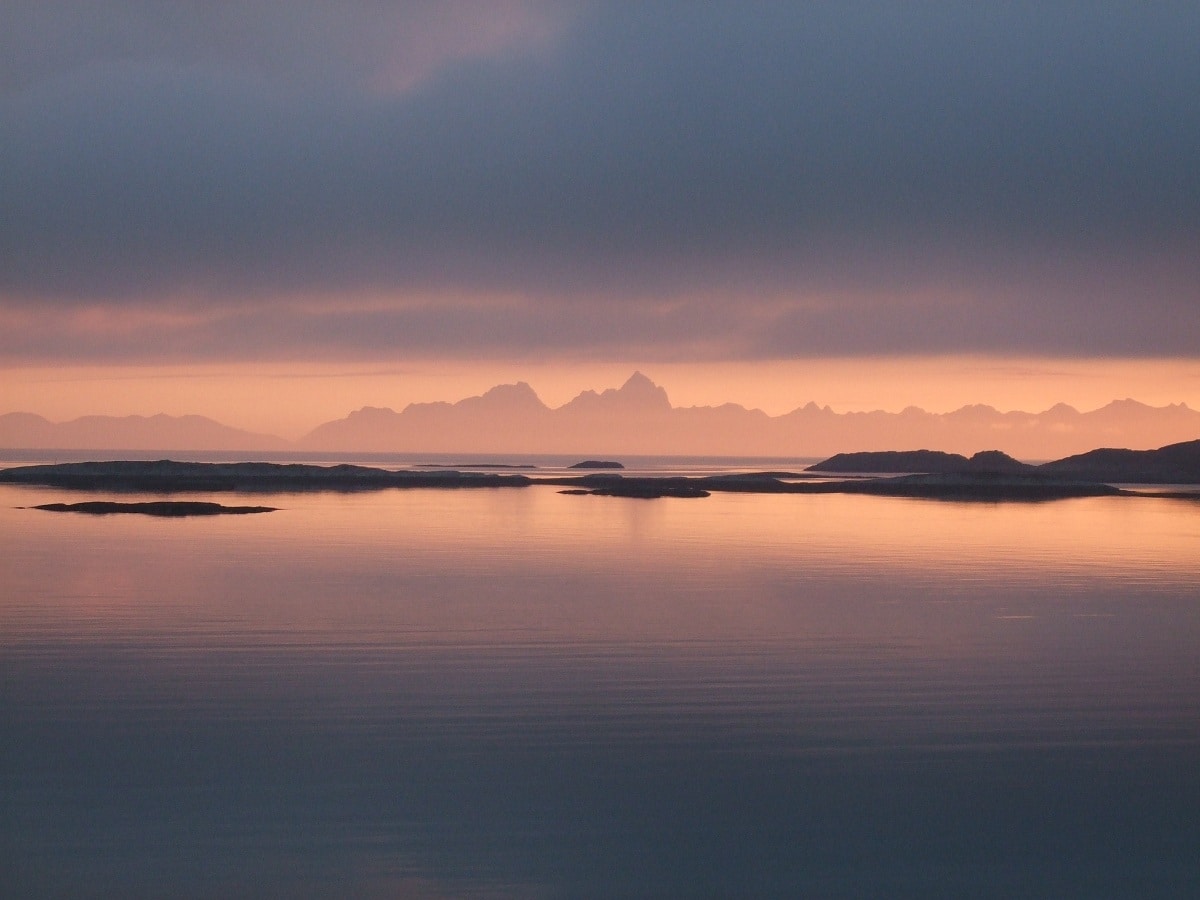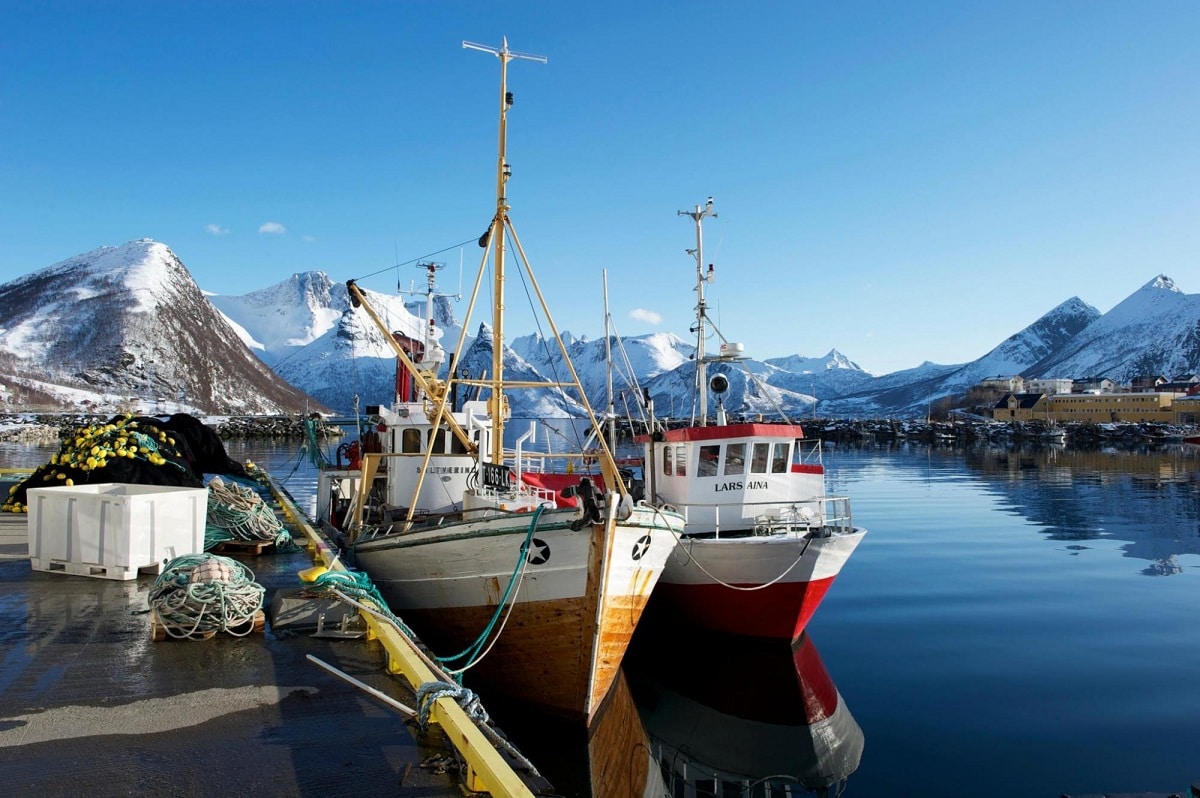
El norwegian sea It is located in the northernmost part of the Atlantic Ocean. This area is known as the northernmost area. It is located in a beautiful country located northeast of the European continent and stretches across the Scandinavian peninsula. It has a great wealth of flora and fauna and a good economy.
Therefore, we are going to dedicate this article to tell you everything you need to know about the Norwegian Sea and its characteristics.
Location

The Norwegian Sea is located at the northernmost point of the Atlantic Ocean, also known as the northernmost area. However, if we do not reveal Norway's position on land, how can we talk about the position of the Norwegian Sea?
Let's start at the beginning, Norway is a beautiful country located in the northeast of the European continent, halfway between Scandinavia. The geographical limits of Norway are: The east borders Sweden, Finland and Russia, it borders the North Sea, the Barents Sea, the Skagerrak Strait and, of course, the Norwegian Sea.
Now that we know the location of Norway and its boundaries, it is easier to understand the location of the Norwegian Sea. It is located between the North Sea and is so named in reference to the Frisian Islands, because it is completely opposite to the South. China Sea and Greenland Sea In Norway Near the coast, it extends to the coasts of the Faroe Islands, Jan Mayen, Iceland and Svalbard. Northwest Norway.
Geographic coordinates of the Norwegian Sea location are 69 degrees north latitude and 0 degrees east longitude. An underwater mountain range connects Greenland, Iceland, the Faroe Islands, and northern Scotland, separating the Norwegian Sea from the Atlantic Ocean.
Norwegian sea formation

It is estimated that the Norwegian Sea was formed more than 250 million years ago, so it must have been produced by the displacement of tectonic plates. The Eurasian plate is a continental tectonic plate that contains the Eurasian continent. The Eurasian continent where Norway is located is separated from the North American plate, including Greenland.
With this tectonic movement, the oceanic shelf between Norway and Greenland began to change, getting wider and deeper over time. As we noted earlier, it is located in the north. An archipelago in the Arctic Ocean stretches east from Svalbard and stretches southwest between Great Britain and the Faroe Islands. It is an autonomous archipelago and part of the Kingdom of the Arctic Ocean. Denmark.
The continental slope is characterized by areas that are really rich in fishing, which is why it is widely used as a fishing ground by fishermen, that is, where fishermen deposit their nets, and numerous coral reefs also stand out.
The formation of the Norwegian Sea has produced a series of important events in terms of landslides in continental blocks, the most famous of which occurred about 8.000 years ago, supposedly like the Storegga landslide. It was so big that it caused a huge tsunami.
For its part, the coast of the Norwegian Sea was formed during the last ice age and is also known as the Wisconsin Glacier in the United States. Large blocks of ice several kilometers high move towards the mainland, forming fjords.
The contact of the ice blocks moves the crust into the sea, thus expanding the continental slope. This landform formation phenomenon can be seen from the Norwegian coast north of Helgeland and the Lofoten Islands. The formation of the Norwegian Sea resulted in the formation of continental shelves of different widths, the minimum space found was 40 kilometers and the maximum of 200 kilometers, its shape was different from that of the North Sea and Barents Sea platforms.
When looking at the platform, in addition to the jagged peaks, there are many ditches, the size of which varies from the lowest 100 meters to the highest 400 meters. They are usually covered with a mixture of gravel, sand and mud and are used extensively as spawning areas for fish.
Key features

Now let's have a deeper understanding of the Norwegian Sea, which has an area of almost 1,5 million square kilometers, a volume of about 2,4 million cubic kilometers and a calculated average depth of 1.600 meters.
It is recognized as the lung of the sea and has the same name as the Greenland Sea. One of the salient characteristics of the Norwegian Sea is that, despite its location and cold winters, it is a sea that does not freeze due to the Gulf Stream flowing from the Gulf of Mexico in the north. In the direction, these ocean currents come into contact with masses of air and cold water that remain high in Europe.
The water of the Gulf Stream is characterized by high salinity, and the ocean currents divert it to the west, due to its higher density, it cools and sinks. The waters of the Gulf of Mexico will certainly be warmer when they reach the Atlantic Ocean and drain into the Arctic.
This creates unique conditions, being one of the richest marine ecosystems on earth and filled the Norwegian Sea with life. The diversity of microclimates and habitats that they present makes them very diverse, which is why it offers many options for the different species of marine animals and plants that settle in them.
Climate, flora and fauna of the Norwegian Sea
In the particularity of the Norwegian Sea, we can highlight the thermohaline circulation, which has a significant impact on the climate of the Norwegian Sea, not only the oceanic climate, but also the regional climate, which differs significantly from the average.
One of the most dramatic features is the 10 degree Celsius shift that occurs between the ocean and the shoreline. However, the Norwegian Sea has not escaped the effects of global warming. Since 1920 and 1960, temperature increases have been reported, which coincides with the decrease in the frequency of storms. Therefore, the frequency and intensity of storms are related to temperature.
The Norwegian Sea's unique formation, climate, and ocean currents make it a biological transition zone because it lies between northern and arctic conditions. Therefore, the flora and fauna of the Noriega Sea species that are characteristic of the two climatic regions. It's a show.
Many species with significant commercial value have been identified as Norwegian seafood, making Norway the world's largest exporter of fish and shellfish, confirming the special conditions and characteristics of the Norwegian Sea. One of the species is the salmon with the scientific name Salmo salar, it is a slender fish, with slightly compressed sides and strong teeth in the lower jaw.
I hope that with this information you can learn more about the Norwegian Sea and its characteristics.